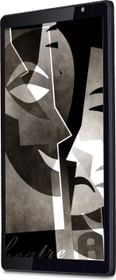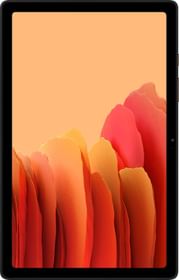ADB or Android Debug Bridge is a tool from Google that helps developers troubleshoot and debug their Apps. It’s a powerful tool that opens up doors for all sorts of nifty tricks that grant more access and let you do a lot of cool stuff with your Android phone.
If you have just tried ADB and are itching to do more with your Android phone, here are a few things that you must try!
How to set-up ADB on your Windows PC
There are numerous guides on the web that will help you set-up ADB on Windows PC or on your Mac. Here’s what you can do if you use a Windows PC.
- Download Platform Tools for Windows and extract them to any folder on your PC.
- Enable Developer Options on your Android phone and turn on ‘USB Debugging’. Now connect your phone to your PC via USB cable.
- Shift + Right-click anywhere in the folder where you extracted Platform tools and select open command window here (or ‘Open Powershell here’ in Windows 10).

- Now write ‘ Adb devices ‘ in the command window or write ‘ .\adb devices ‘ or ‘ .\adb.exe devices ‘ in the Powershell window
- For the first time, you will have to authorize ADB connection on your phone. Check the ‘remember this PC’ option while authorizing ADB access.
- If you see a serial number followed by ‘device’ as shown in the image above, you are all set.
11 Things to try with ADB on Android
Lets now proceed to some cool ADB tricks:
1. Screen mirroring and universal copy-paste with Scrcpy

Scrcpy is one of the best screen mirroring tools for Android that’s free and works for every phone. Once connected to scrcpy, you can directly copy-paste between your phone and PC. And if you have a touch-screen laptop, you can operate your phone from your laptop screen just as you’d operate your PC.
You just need to download Scrcpy zip file from the official page and extract it within your Platform Tools folder. We also have a separate scrcpy guide that will walk you through all steps.
2. Remove Bloatware
Bloatware on modern phones in not limited to just apps. There are several services running in the background that you may disable using simple ADB commands. For instance, to remove Facebook services running the background you may use the following commands as suggested by XDA Senior member Saiger.
adb shell
pm uninstall -k –user 0 com.facebook.appmanager
pm uninstall -k –user 0 com.facebook.services
pm uninstall -k –user 0 com.facebook.system
You may also check for package names of other rogue services using the Package Name Viewer 2.0 app and uninstall them separately.
3. Check Bluetooth Codecs supported and being used via ADB
ADB also provides a convenient way of checking what Bluetooth codec is being used, what Bluetooth Codecs are supported by your phone, and those supported by the paired Bluetooth headphones. Here’s what you need to do:
Connect your phone to Bluetooth headphones and play some music. Now open adb terminal and capture a bug report using the following command
.\adb bugreport

A zip file by the given name (‘checkcodec’ in the image above) will be generated and will be available in the Platform Tools folder. Now, open this folder and open the Notepad file (.txt) at the end that is usually named bugreport-BUILD_ID-DATE.txt (usually, not always). On Samsung phones, look for Dumpstate


Now open the text file in notepad and use Ctrl+F and search for Profile: A2dpService
The codec being used and other details will be mentioned next to mCodecConfig:

On non-Samsung phones, you can also search for A2DP Codec State and check for the codec being used in the next line next to “Current Codec:”

You can also search for ‘name = headphone name” and check for codecs supported by your headphone or earphones.

You can also search for A2DP
4. Install Multiple Apps using ADB
ADB terminal can also be used to quickly install or uninstall apps on your phone. If you need to switch phones very frequently, you can keep all your APK files in the Platform Tools folder and install them on your phone using the following adb command:
.\adb Install
or you can run multiple install commands at once:
ADB install

You may also install all APKs in a folder using the following command
for %f in (
To uninstall an app, use
.\adb uninstall
Package name can be grabbed from the URL of the apps on Google playstore page or by using Package Name Finder 2.0 app.
5. Check HDR/SDR streaming quality on FireTV stick
Many apps are still not very transparent about streaming quality. If you are using a Fire TV stick, which uses a fork of Android, it’s possible to know bitrate, HDR/SDR streaming, and audio-video codecs being used real-time.
You will need to connect FireTV stick via ADB and enable a secret developer tools menu. To proceed, ensure that your Fire TV stick and PC are on the same Wi-Fi network. Use the following command to connect:
.\adb connect
For example:
.\adb connect 192.168.26.122:5555
Check Settings> My Fire TV > About > Network for your Fire TV stick IP address.
Now use the following command to access the hidden control panel:
adb shell am start com.amazon.ssm/com.amazon.ssm.ControlPanel

When the menu pops-up, toggle on the ‘Advanced Options’ tab. You can follow our detailed guide for a step-by-step walkthrough.
6. Backup your phone and restore backup
If you want to take a complete backup of your phone you can do so using adb using the following command
.\adb backup -all -f

The folder path will be the path of the folder where you wish to store the backup. Make sure to add ‘.ab’ at the end of the file name. You will get a prompt on your phone where you will have to enter a password for encryption.

Do not exit this screen on your phone. It will auto close once the backup is done.
You can restore the backup using the following command
.\adb restore
7. Record screen or take screenshots
Almost all interfaces now have screen recording option, but you can also accomplish the same without any annoying bubbles and overheads using adb. The recording will be saved to your phone and you will have to specify the path in the command:
./adb shell screenrecord

For the sake of simplicity, you may specify the path as /sdcard for root directory.
The recording continues for 3 minutes and you can end it using CTRL +C
8. Pull files and folders from your phone
You can also pull folders, say your entire camera folder directly from adb. This makes even more sense when you connect to adb over Wi-Fi, as we will discuss under the next step.
To pull a folder, you can use the following command
.\adb

In the example above, we have pulled the DCIM folder on our phone and copied it to ‘backup’ folder in our C drive.
9. Check fast charging and Battery stats
To check fast charging and battery stats, first connect your phone to adb over Wi-Fi.
Do so so, go to Developer options and turn on Wireless Debugging. Now tap on the wireless debugging option and note the IP address and port specified. Ensure that your phone and PC are on the same Wi-Fi network.

Now use the following command
.\adb connect

Now you can connect your phone to a charger and monitor stats like charging current and battery health using the following command
.\adb Shell dumpsys Battery

In the example above, it was interesting to notice how the 65W SuperVOOC battery and charging current changed as battery percentage (level) approached 100. From charger voltage and battery current, you can also get an estimate of how fast a particular charger is charging your phone.
10. Extract and app apk
If you want to pull apk of an app, you can do so using ADB. First you will need to know the package name for the app and its path on your phone.
For the package name, you can use package name viewer 2.0 app or extract it from the URL of the app in Google play store.
To get the path, use the following command
.\adb shell pm path
now copy the path returned by the terminal and use it in the command below in order to pull the apk file
.\adb pull

11. Enter Recovery Mode and clear data or cache
Using ADB terminal, you can quickly reboot into recovery mode. Use the following command:
.\adb reboot recovery
If you have an old device, you can wipe the cache partition since that often helps get rid of random issues. In newer devices, you can wipe data and reset your phone without losing your photos, messages, accounts and apps (app data will be lost).
11 cool things you can do with ADB on your phone
We have included the things we frequently use the ADB terminal for. Of course, this is just scratching the surface and there’s so much more you can do using ADB. You may also check for different ADB commands listed on the Android developer page. If we have missed out a popular use case, do let us know in the comments below.






























